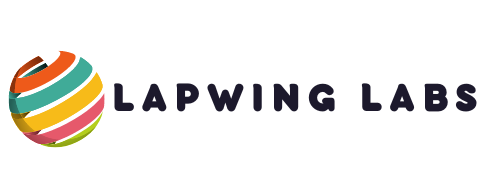In the age of accelerated customer demand with regard to flawless digital satisfaction, the role of Quality Assurance is indispensable. No matter if you are creating a web application, mobile application, or any kind of enterprise software, quality assurance is a crucial step to make your end product as best as possible. A good approach to the QA process will help organizations to cut down on the waste of time and raw materials as well as improve the client satisfaction level without a lot of defects.
Now, let’s discuss some important elements included in this blog post regarding all key aspects of achieving a high-quality assurance procedure that can help create software solutions of the best quality.
What is Quality Assurance (QA)?
QA is an approach that uses a series of scientific, operational procedures to describe the requirements of the planned software quality. It includes the actions taken to assess and maintain the degree of software quality, thus enabling organizations to create flawless, dependable systems. Software testing is a subset of QA, addressing only the search for defects, but QA is a process that starts with planning and ends with code maintenance.
QA aims to Achieve Several Objectives:
- Ensure Product Quality: By identifying issues early, QA ensures the product meets the required standards.
- Increase Efficiency: A solid QA process helps streamline development, reducing rework and delays.
- Improve User Satisfaction: A product free from bugs and performance issues leads to happy users.
- Mitigate Risks: Preventing bugs and failures reduces the risk of post-release issues and costly patches.
Why is a Strong QA Process Important?
A strong QA process offers several benefits:
- Identifying Bugs Early: Bug fixes are less expensive the earlier you find them. QA saves time and money on post-release fixes by identifying problems during development.
- Enhanced User Experience: QA makes sure that your program functions flawlessly on a variety of platforms and devices, meeting user expectations.
- Performance Optimization: Performance testing lowers the possibility of crashes or slowdowns by ensuring the program can manage the anticipated load.
- Increased Customer Satisfaction: A flawless, effective application lowers turnover and boosts customer loyalty.
- Compliance and Security: By ensuring that your software is protected against vulnerabilities and complies with regulatory standards, QA helps you avoid expensive security breaches.
- Efficient Resource Utilization: By detecting problems early in the development lifecycle, a robust QA procedure enables teams to save time and effort and make effective use of resources.
Steps to Build a Strong Quality Assurance Process
To design an effective QA process, it is important to have good preparation, proper tools, and a positive team approach. The factor of testing and quality assurance methodologies that need to take the cross-functional path of development IP is critical in streamlining a dependable QA process.
Some of the important processes one has to follow in order to establish a good QA are as follows:
Define Clear Quality Standards
The key to a successful implementation of QA is first to decide what quality means in your organization and the software product. To any company, quality standards should be clearly specified and provided to meet the needs of the various stakeholders such as customers, developers, and business owners.
- Functional Requirements: These are the prime requirements and characteristics that the software needs to provide. Functional requirements guide the QA team in testing critical features.
- Non-Functional Requirements: These include functional requirements and non-functional requirements, which are performance, security, usability, and scalability, by which an assurance is made that the product performs optimally under different circumstances.
- Acceptance Criteria: These criteria determine what is acceptable or not acceptable regarding each feature or functionality of the software to suit business and customers’ demands.
Plan and Document the QA Process
A well-documented QA plan is crucial for guiding the entire team. The QA plan should outline:
- Testing Strategy: The strategy describes the approach to be used for the various types of testing (e.g., functional, performance, security). It should cover test environments, tools, and methodologies.
- Test Scenarios and Test Cases: Detailed scenarios and test cases should be documented to ensure every feature is tested thoroughly. A test case should include a description, expected results, and pass/fail criteria.
- Test Environment: Define the hardware, software, and network configurations in which testing will take place. It should also include the different browsers, devices, and operating systems to test against.
- Test Plan Timeline: Create a timeline that includes all major milestones and deadlines for testing, including unit testing, system testing, and user acceptance testing (UAT).
Choose the Right Testing Methodology
There are several methodologies available for QA teams, and the right one depends on the type of project and team dynamics. The most popular testing methodologies include:

- Waterfall Model: The QA process of the traditional Waterfall model comes linearly and sequentially. Testing, in turn, only starts when the development phase of software is over. This model is appropriate for limited, precisely scoped operations or scaling projects but is not easily adjustable to accommodate evolving, larger-scale operations with more frequent changes required.
- Agile Testing: Agile testing, on the other hand, is a flexible and repeatable model of testing in which testing activities are performed in phases such as the developmental phase. Agile encourages an active feedback loop and is a real team effort as developers, testers, and stakeholders are involved. This approach is particularly useful in projects where the product is dynamic and is developed incrementally.
Key Agile practices:
Continuous Integration (CI) and Continuous Testing (CT) guarantee that testing is done on every given iteration. TDD and BDD are designed to write tests before the actual code to increase the quality of the code.
- DevOps Testing: DevOps implies collaboration between the development and operations teams that enhance the fast delivery of quality software. QA is automatic, constant, and continuous, and it is embedded in the CI/CD process, which enhances feedback time and speed of delivery.
- CI/CD: Automated pipelines continuously integrate code, run tests, and deploy software. It allows teams to detect defects and bugs early, facilitating quick fixes.
- Automated Testing: Automation plays a crucial role in DevOps, especially in regression testing, performance testing, and security testing.
Select the Right QA Tools
Selecting the proper tools can make your job easier and provide you with a set of efficient tools to cover tests completely. There are different types of QA tools based on testing type or methodologies. Below are the essential categories of QA tools:
Test Automation Tools
- Selenium: Selenium is presently the most popular tool for test automation of web-based applications. It works well with several browsers and is compatible with Java, Python, and JavaScript, among others.
- JUnit: A particular structure utilized in unit testing of Java applications.
- TestNG: Similar to JUnit, but with more advanced features like parallel test execution and better reporting.
- Cypress: An open-source testing tool for web applications that use JavaScript from start to end. It runs in the same runtime as the application and allows for easy debugging.
- Appium: A popular tool for mobile testing, enabling automated testing of native and hybrid mobile apps.
Bug Tracking and Issue Management Tools
- JIRA: A widely used application managed for issues and projects keeping track. It helps arrange bugs and defects in a structured manner, making it easy for the QA teams to track them.
- Bugzilla: A free software that serves the purpose of collecting and organizing bug data as well as within project issues.
- Trello: Trello is not a tool aimed at supporting QA directly, yet, it is a versatile and simple tool for managing tasks and sprinting with testing tasks and bug tracking.
Performance Testing Tools
- JMeter: Apache JMeter is a versatile, free-source tool used for load and performance testing. It can simulate a high traffic load in order to discover problem areas.
- LoadRunner: A Micro Focus performance testing tool that can help to find out how an application behaves when thousands of users are using it.
Security Testing Tools
- OWASP ZAP (Zed Attack Proxy): Web application vulnerability discovery tool developed in C language for security assessment of web applications.
- Burp Suite: A comprehensive tool for testing web application security and identifying common security issues.
JSONPath tester tools can be particularly useful for validating and extracting data from JSON responses in APIs.
Implement Continuous Integration and Continuous Testing
Continuous Integration (CI) and Continuous Testing (CT) are key concepts guaranteeing that software is tested often, with immediate feedback and minimal float time for defects.
- CI Tools: Among the most obvious CI that boosts automation at the stage of code integration and deployment are Jenkins, GitLab CI, and CircleCI. It is used to enable automation tests to be executed each time there is a commit of new code so that defects are seen early in SDS.
- Continuous Testing: With automated tests running as a CI/CD pipeline, testing is performed at every commit, there are no bottlenecks, and every new feature cannot break other functionalities.
Focus on Automated Regression Testing
Regression testing guarantees that no other program alteration will make the other sections of the software less useful. Automated regression testing can result in a major advantage, as the QA team can perform a large number of tests without requiring extra effort.
When to Automate:
Automate repetitive tasks like regression tests, which are critical for ensuring that new features don’t disrupt existing functionality.
Best Tools for Automation:
Popular tools like Selenium, Cypress, and TestNG are widely used to automate regression tests.
LambdaTest is a cloud-based cross-browser testing platform that enables automated testing across 3,000+ real browsers and operating systems. It is highly effective for regression testing because it:

- Supports Parallel Testing: LambdaTest allows multiple tests to run simultaneously, drastically reducing testing time.
- Integrates with Popular Frameworks: It seamlessly works with Selenium, Cypress, and TestNG, ensuring smooth execution of automated scripts.
- Real Device and Browser Testing: With LambdaTest, QA teams can ensure compatibility and functionality across different environments without maintaining physical devices.
- Continuous Testing Support: LambdaTest integrates with CI/CD pipelines, enabling automated regression tests to be triggered with every code commit and ensuring quick feedback.
- Detailed Reporting and Debugging Tools: LambdaTest provides visual logs, video recordings, and detailed error tracking, making it easier to analyze and resolve failures.
By leveraging LambdaTest, QA teams can maintain high test coverage and ensure consistent application performance even as new features are added or changes are made.
Asess and Improve the QA Process Continuously
A strong QA process should be constantly evolving. After each release cycle, take the time to review and improve your QA efforts. Some best practices include:
- Post-Mortem Analysis: After a release, perform a post-mortem to assess what went well and what could be improved.
- Test Coverage Metrics: Track test coverage and aim to increase it over time. Identify areas of the application that need more thorough testing.
- Collaboration and Communication: Regularly communicate with development teams to understand new features, changes, and risk areas. Close collaboration ensures testing is aligned with the overall product development process.
In Conclusion
Quality assurance is a critical concept in software development that ensures that a user gets the best version of the application as needed. Entering precise statements of quality characteristics, choosing the optimum method for the job, utilizing essential QA tools, practicing continuous testing, and emphasizing automation will help guarantee that a product is virtually flawless and satisfies requirements.
QA is not about testing alone but about creating awareness that every member of the development team is part of making sure that the software development outcome is valuable to the customer. Effective QA processes also play a profound part in the development of a positive user experience, the overall results of the project, the speed of release, and customer satisfaction.
As is clear from the above QA essentials, by sticking to the established format, you can build a sound quality assurance process that has to underpin the concept of continuous improvement and keep your software reliable, scalable, and secure.



